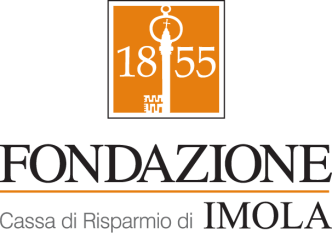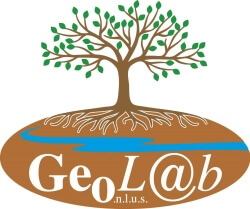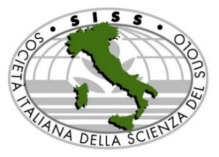Technosols constructed from urban waste enhance carbon stabilization through improved soil aggregation
DOI:
https://doi.org/10.6092/issn.2281-4485/21163Keywords:
Carbon storage, Concrete waste, Excavation waste, FTIR spectroscopy, Urban farming, Urban soilsAbstract
This study investigates the distribution and stabilization of carbon (C) in technosols constructed from urban waste materials and organic inputs, aiming to enhance C storage and restore urban ecosystems. Technosols composed of concrete (Cw) and excavation (Ew) waste, wood chips (W), compost (C), and biochar (B) (CwO, EwO, and WCB) were analyzed over two years within an urban milpa, a traditional Mesoamerican agricultural system. We assessed C and nitrogen (N) contents, exchangeable cations, aggregate size distribution, and molecular composition. Among the technosols, the wood chip, compost, and biochar mixture (WCB) exhibited the highest organic C (OC), inorganic C (IC), and total N (TN) contents, followed by CwO and EwO. While C levels remained stable in all technosols, TN decreased in CwO, increasing its C/N ratio to 27, indicating potential N immobilization. Calcium concentrations increased across all technosols (CwO = WCB > EwO), while Na levels decreased, improving aggregate stability. Macroaggregates accounted for 85% of OC and TN in all technosols, with microaggregates and silt + clay fractions containing 5% and 10%, respectively. CwO and EwO exhibited particulate organic matter occlusion within macroaggregates, while EwO had more microaggregates and silt + clay particles. FTIR analysis confirmed the presence of carbonates in all aggregate sizes and showed that the molecular composition of stabilized C varied, with more recalcitrant compounds found in microaggregates. These results highlight the importance of managing cation balances, particularly increasing Ca2+ and reducing Na+, to improve soil structure and enhance C stabilization.
References
ABBRUZZINI T.F., REYES-ORTIGOZA A.L., ALCÁNTARA HERNÁNDEZ R.J., MORA L., FLORES L., PRADO B. (2022) Chemical, biochemical, and micro-biolgical properties of Technosols produced from urban inorganic and organic wastes. Journal of Soils and Sedi-ments, 22:146–161. https://doi.org/10.1007/s11368-021-03062-2
ALMAJMAIE A., HARDIE M., ACUNA T., BIRCH C. (2017) Evaluation of methods for determining soil aggregate stability. Soil & Tillage Research, 167:39–45. https://doi.org/10.1016/j.still.2016.11.003
BONETA A., RUFÍ-SALÍS M., ERCILLA-MONTSERRAT M., GABARRELL X., RIERADEVALL J. (2019) Agronomic and environmental assessment of a polyculture rooftop soilless urban home garden in a Mediterranean city. Frontiers in Plant Science, 10:341. https://doi.org/10.3389/fpls.2019.00341
BUCKA F.B., KÖLBL A., UTEAU D., PETH S., KÖGEL-KNABNER I. (2019) Organic matter input determines structure development and aggregate formation in artificial soils. Geoderma, 354:113881. https://doi.org/10.1016/j.geoderma.2019.113881
COTRUFO M.F., RANALLI M.G., HADDIX M.L., SIX J., LUGATO E. (2019) Soil carbon storage informed by particulate and mineral-associated organic matter. Nature Geoscience, 12:1–6. https://doi.org/10.1038/s41561-019-0484-6
CRUZ-BELLO G.M., GALEANA-PIZAÑA J.M., GONZÁLEZ-ARELLANO S. (2023) Urban growth in peri-urban, rural, and urban areas: Mexico City. Buildings and Cities, 4:1–16. https://doi.org/10.5334/bc.230
DEEB M., GRIMALDI M., LERCH T.Z., PANDO A., GIGON A., BLOUIN M. (2016) Interactions between shape its hydrostructural properties. Soil Discussions, 2: 1309–1344.https://doi.org/10.5194/soild-2-1309-20155
DEEB M., DESJARDINS T., PODWOJEWSKI P., PANDO A., BLOUIN M., LERCH T.Z. (2017) Interactive effects of compost, plants and earthworms on the aggrega-tions of constructed Technosols. Geoderma, 305:305–313. http://dx.doi.org/10.1016/j.geoderma.2017.06.014
DEEB M., GROFFMAN P.M., BLOUIN M., EGENDORF S.P., VERGNES A., VASENEV V., CAO D.L., WALSH D., MORIN T., SÉRÉ G. (2020) Constructed Technosols are key to the sustainable development of urban green infrastructure. Soil Discussions. https://doi.org/10.5194/soil-2019-85
DÍAZ-ZORITA M., PERFECT E., GROVE J.H. (2002) Disruptive methods for assessing soil structure. Soil & Tillage Research, 64:3–22. https://doi.org/10.1016/S0167-1987(01)00254-9
ELLERBROCK R.H., GERKE H.H. (2013) Characterization of organic matter composition of soil and flow path surfaces based on physicochemical principles: a review. Advances in Agronomy, 121:117–177. https://doi.org/10.1016/B978-0-12-407685-3.00003-7
FERNÁNDEZ-UGALDE O., VIRTO I., BARRÉ P., APESTEGUÍA M., ENRIQUE A., IMAZ M.J., BESCANSA P. (2014) Mechanisms of macroaggregate stabilisation by carbonates: implications for organic matter protection in semi-arid calcareous soils. Soil Research, 52:180–192. https://doi.org/10.1071/SR13234
FORJÁN R., RODRÍGUEZ-VILA A., CERQUEIRA B., COVELO E.F., MARCET P., ASENSIO V. (2018) Comparative effect of compost and technosol enhanced with biochar on the fertility of a degraded soil. Environmental Monitoring and Assessment, 190:610. https://doi.org/10.1007/s10661-018-6997-4
FROUZ J., LIVEČKOVÁ M., ALBRECHTOVÁ J., CHROŇÁKOVÁ A., CAJTHAML T., PIŽL V., HÁNĚL L., STARÝ J., BALDRIAN P., LHOTÁKOVÁ Z., ŠIMÁČKOVÁ H., CEPÁKOVÁ Š. (2013) Is the effect of trees on soil properties mediated by soil fauna? A case study from postmining sites. Forest Ecology and Management, 309:87–95. https://doi.org/10.1016/j.foreco.2013.02.013
GEE G.W., OR D. (2002) Particle-size analysis. In: Methods of Soil Analysis: Part 4 Physical Methods, 255–293.
GIANNETTA B., PLAZA C., VISCHETTI C., COTRUFO M.F., ZACCONE C. (2018) Distribution and thermal stability of physically and chemically protected organic matter fractions in soils across different ecosystems. Biology and Fertility of Soils, 54:671–681. https://doi.org/10.1007/s00374-018-1290-9
GRARD B.J.P., CHENU C., MANOUCHEHRI N., HOUOT S., FRASCARIA-LACOSTE N., AUBRY C. (2018) Rooftop farming on urban waste provides many ecosystem services. Agronomy for Sustainable Develop-ment,38:1–12.https://doi.org/10.1007/s13593-017-0474-2
HERNANDEZ-SORIANO M.C., KERRÉ B., KOPITTKE P.M., HOREMANS B., SMOLDERS E. (2016) Biochar affects carbon composition and stability in soil: a combined spectroscopy-microscopy study. Scientific Reports, 6:25127. https://doi.org/10.1038/srep25127
HOFFLAND E., KUYPER T.W., COMANS R.N.J., CREAMER R.E. (2020) Eco-functionality of organic matter in soils. Plant and Soil, 455:1–22. https://doi.org/10.1007/s11104-020-04651-9
IVASHCHENKO K., LEPORE E., VASENEV V., ANANYEVA N., DEMINA S., KHABIBULLINA F., VASENEVA I., SELEZNEVA A., DOLGIKH A., SUSHKO S., MARINARI S., DOVLETYAROVA E. (2021) Assessing soil-like materials for ecosystem services provided by constructed Technosols. Land, 10:1185. https://doi.org/10.3390/land10111185
JANGORZO N.S., WATTEAU F., HAJOS D., SCHWARTZ C. (2015) Nondestructive monitoring of the effect of biological activity on the pedogenesis of a Technosol. Journal of Soils and Sediments, 1:1705–1715. https://doi.org/10.1007/s11368-014-1008-z
JANGORZO N.S., WATTEAU F., SCHWARTZ C. (2018) Ranking of wetting–drying, plant, and fauna factors involved in the structure dynamics of a young constructed Technosol. Journal of Soils and Sediments, 18:2995–3004. https://doi.org/10.1007/s11368-018-1968-5
KEMPER W.D., ROSENAU R.C. (1986) Aggregate stability and size distribution. In: KLUTE A. (Ed). Methods of Soil Analysis, Part 1: Physical and Mineralogical Methods. Agronomy Monograph 9, Soil Science Society of America, pp. 425–442.
KÖGEL-KNABNER I., RUMPEL C. (2018) Advances in molecular approaches for understanding soil organic matter composition, origin, and turnover: A historical overview. In: SPARKS D.L. (Ed). Advances in Agronomy, Academic Press, 149:1–48. https://doi.org/10.1016/bs.agron.2018 .01.003
LEGUÉDOIS S., SÉRÉ G., AUCLERC A., CORTET J., HUOT M., OUVRARD S., WATTEAU F., SCHWARTZ C., MOREL J.L. (2016) Modelling pedogenesis of Technosols. Geoderma, 262:199–212. https://doi.org/10.1016/j.geoderma.2015.08.008
LEHMANN J., KINYANGI J., SOLOMON D. (2007) Organic matter stabilization in soil microaggregates: implications from spatial heterogeneity of organic carbon contents and carbon forms. Biogeochemistry, 85:45–57. https://doi.org/10.1007/s10533-007-9105-3
LIANG C., SCHIMEL J., JASTROW J. (2017) The importance of anabolism in microbial control over soil carbon storage. Nature Microbiology, 2:1–6. https://doi.org/10.1038/nmicrobiol.2017.105
LILAND K.H., ALMØY T., MEVIK B.-H. (2010) Optimal choice of baseline correction for multivariate calibration of spectra. Applied Spectroscopy, 64:1007–1016. https://doi.org/10.1366/000370210792434350
LIMA G.N., FONSECA-SALAZAR M.A., CAMPO J. (2023) Urban growth and loss of green spaces in the metropolitan areas of São Paulo and Mexico City: effects of landcover changes on climate and water flow regulation. Urban Ecosystems, 26:1739–1752. https://doi.org/10.1007/s11252-023-01394-0
LORENZ K., KANDELER E. (2006) Microbial biomass activities in urban soils in two consecutive years. Journal of Plant Nutrition and Soil Science, 169:799–808. https://doi.org/10.1002/jpln.200622001
MAZURAK A.P. (1950) Effect of gaseous phase on water-stable synthetic aggregates. Soil Science, 69:135–148. https://doi.org/10.1097/00010694-195002000-00005
MOREL J.L., CHENU C., LORENZ K. (2015) Ecosystem services provided by soils of urban, industrial, traffic, mining, and military areas (SUITMAs). Journal of Soils and Sediments, 15:1659–1666. https://doi.org/10.1007/s11368-014-0926-0
MORENO-BARRIGA F., DÍAZ V., ACOSTA J.A., MUÑOZ M.A., FAZ Á., ZORNOZA R. (2017) Organic matter dynamics, soil aggregation and microbial biomass and activity in Technosols created with metalliferous mine residues, biochar and marble waste. Geoderma, 301:19–29. https://doi.org/10.1016/j.geoderma.2017.04.017
NGUYEN T.T., CAVAGNARO T.R., NGO H.T.T., MARSCHNER P. (2016) Soil respiration, microbial biomass and nutrient availability in soil amended with high and low C/N residue – Influence of interval between residue additions. Soil Biology and Biochemistry, 95:189–197. https://doi.org/10.1016/j.soilbio.2015.12.020
NICHOLS K., HALVORSON J.J. (2013) Roles of biology, chemistry, and physics in soil macroaggregate formation and stabilization. Open Agriculture Journal, 7:107–117.
O’RIORDAN R., DAVIES J., STEVENS C., QUINTON J.N., BOYKO C. (2021) The ecosystem services of urban soils: A review. Geoderma, 395:115076. https://doi.org/10.1016/j.geoderma.2021.115076
PRADO B., MORA L., ABBRUZZINI T., FLORES S., CRAM S., ORTEGA P., NAVARRETE A., SIEBE C. (2020) Feasibility of urban waste for constructing Techno-sols for plant growth. Revista Mexicana de Ciencias Geoló-gicas, 37:237–249. https://doi.org/10.22201/cgeo.20072902e.2020.3.1583
PRONK G.J., HEISTER K., VOGEL C., BABIN D., BACHMANN J., DING G.-C., DITTERICH F., GERZABEK M.H., GIEBLER J., HEMKEMEYER M., KANDELER E., MOUVENCHERY Y.K., MILTNER A., POLL C., SCHAUMANN G.E., SMALLA K., STEINBACH A., TANUWIDJAJA I., TEBBE C.C., WICK L.Y., WOCHE S.K., TOTSCHE K.U., SCHLOTER M., KÖGEL-KNABNER I. (2016) Interaction of minerals, organic matter, and microorga-nisms during biogeochemical interface formation as shown by a series of artificial soil experiments. Biology and Ferti-lity of Soils, 53:9–22. https://doi.org/10.1007/s00374-016-1161-1
R CORE TEAM (2021) R: A language and environment for statistical computing. R Foundation for Statistical Computing, Vienna, Austria. https://www.R-project.org/
RAKHSH F., GOLCHIN A., AL AGHA A.B., ALAMDARI P. (2017) Effects of exchangeable cations, mineralogy and clay content on the mineralization of plant residue carbon. Geoderma, 307:150–158. https://doi.org/10.1016/j.geoderma.2017.07.010
RAPHAEL L. (2011) Application of FTIR spectroscopy to agricultural soils analysis. In: NIKOLIC G. (Ed). Fourier Transforms — New Analytical Approaches and FTIR Strategies. InTech, London, pp. 385–404.
REES F., DAGOIS R., DERRIEN D., FIORELLI J.-L., WATTEAU F., MOREL J.L., SCHWARTZ C., SIMON-NOT M.-O., SÉRÉ G. (2019) Storage of carbon in con-structed Technosols: in situ monitoring over a decade. Geoderma, 337:641–648. https://doi.org/10.1016/j.geoderma.2018.10.009
RILLIG M.C., AGUILAR-TRIGUEROS C.A., BERGMANN J., VERBRUGGEN E., VERESOGLOU S.D., LEHMANN A. (2015) Plant root and mycorrhizal fungal traits for understanding soil aggregation. New Phytologist, 205:1385–1388. https://www.jstor.org/stable/newphytologist.205.4.1385
ROKIA S., SÉRÉ G., SCHWARTZ C., DEEB M., FOURNIER F., NEHLS T., DAMAS O., VIDAL-BEAUDET L. (2014) Modelling agronomic properties of Technosols constructed with urban wastes. Waste Management, 34:2155–2162. https://doi.org/10.1016/j.wasman.2013.12.016
RUIZ F., CHERUBIN M.R., FERREIRA T.O. (2020) Soil quality assessment of constructed Technosols: Towards the validation of a promising strategy for land reclamation, waste management and the recovery of soil functions. Journal of Environmental Management, 276:111344.https://doi.org/10.1016/j.jenvman.2020.111344
SAFAR F., WHALEN J.K. (2023) Mechanical stability of newly-formed soil macroaggregates influenced by calcium concentration and the calcium counter-anion. Geoderma, 430 :116333. https://doi.org/10.1016/j.geoderma.2023.116333
SCHMIDT H., TAYLOR P. (2014) Kon-Tiki flame cap pyrolysis for the democratization of biochar production. Ithaka Journal, pp. 338–348.
SEDEMA (2021) Secretaría del Medio Ambiente del Gobierno de la Ciudad de México. Inventario de Residuos Sólidos CDMX. México, 160 pp.
SÉRÉ G., SCHWARTZ C., OUVRARD S., RENAT J.-C., WATTEAU F., VILLEMIN G., MOREL J.L. (2010) Early pedogenic evolution of constructed Technosols. Journal of Soils and Sediments, 10:1246–1254. https://doi.org/10.1007/s11368-010-0206-6
SÉRÉ G., SCHWARTZ C., OUVRARD S., SAUVAGE C., RENAT J.-C., MOREL J.L. (2008) Soil construction: a step for ecological reclamation of derelict lands. Journal of Soils and Sediments, 8:130–136. https://doi.org/10.1065/jss2008.03.277
SIX J., ELLIOTT E.T., PAUSTIAN K. (2000) Soil macroaggregate turnover and microaggregate formation: a mechanism for C sequestration under no-tillage agriculture. Soil Biology and Biochemistry, 32:2099–2103. https://doi.org/10.1016/S0038-0717(00)00179-6
STEVENS A., RAMIREZ-LOPEZ L. (2020) An introduction to the prospectr package. R package Vignette. R package version 0.2.1.
TISDALL J.M., OADES J.M. (1982) Organic matter and water-stable aggregates in soils. Journal of Soil Science, 33:141–163. https://doi.org/10.1111/j.1365-2389.1982.tb01755.x
UN-HABITAT CORE TEAM (2022) World Cities Report 2022: Envisaging the Future of Cities. United Nations Human Settlements Programme (UN-Habitat). Nairobi, Kenya, 387
VERGNES A., BLOUIN M., MURATET A., LERCHN T.Z., MENDEZ-MILLAN M., ROUELLE-CASTREC M., DUBSN F. (2017) Initial conditions during Technosol implementation shape earthworms and ants diversity. Landscape and Urban Planning, 159:32–41. https://doi.org/10.1016/j.landurbplan.2016.10.002
VIDAL-BEAUDET L., ROKIA S., NEHLS T., SCHWARTZ C. (2018) Aggregation and availability of phosphorus in a Technosol constructed from urban wastes. Journal of Soils and Sediments, 18:456–466. https://doi.org/10.1007/s11368-016-1469-3
YU H., DING W., CHEN Z., ZHANG H., LUO J., BOLAN N. (2015) Accumulation of organic C components in soil and aggregates. Scientific Reports, 5:13804. https://doi.org/10.1038/srep13804
WITZGALL K., VIDAL A., SCHUBERT D.I., HÖSCHEN C., SCHWEIZER S.A., BUEGGER F., POUTEAU V., CHENU C., MUELLER C.W. (2021) Particulate organic matter as a functional soil component for persistent soil organic carbon. Nature Communications, 12:4115. https://doi.org/10.1038/s41467-021-24192-8
Downloads
Published
How to Cite
Issue
Section
License
Copyright (c) 2025 Thalita Fernanda Abbruzzini, Blanca Lucia Prado Pano, Lucy Mora Palomino, Alan Ulises Loredo-Jasso, María del Pilar Ortega Larrocea, Ceres Perez Vargas, Victor Manuel Peña Ramirez

This work is licensed under a Creative Commons Attribution 4.0 International License.









